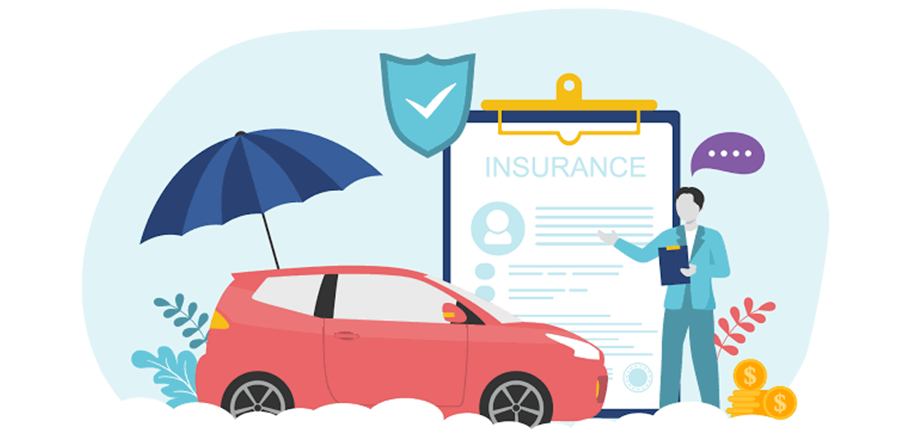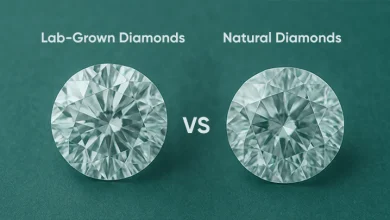0 Down Car Insurance: Complete Guide to Zero Upfront Coverage in 2025

With car insurance costs reaching unprecedented levels—averaging $2,101 annually in 2025—the traditional requirement for substantial down payments has created a significant barrier for millions of drivers. Zero down car insurance eliminates this obstacle entirely, allowing qualified drivers to secure full coverage without any upfront payment. This comprehensive guide explains how 0 down policies work, who qualifies, and how to find the best options for your situation.
Understanding 0 Down Car Insurance
Zero down car insurance, also known as no down payment coverage, allows you to start your policy without paying any money upfront. Unlike traditional insurance that typically requires 20-50% of your annual premium as a down payment, these policies begin immediately with your first regular payment occurring according to your chosen schedule.
This doesn’t mean the insurance is free—you’re still responsible for premium payments. The key difference is the elimination of the financial barrier that prevents many drivers from obtaining necessary coverage when they need it most.
How 0 Down Car Insurance Works
Traditional vs. Zero Down Payment Models
Traditional Model:
- Requires substantial down payment (often $300-$1,500+)
- Down payment counts toward total premium
- Coverage begins after payment verification
- Remaining balance split into monthly installments
Zero Down Model:
- No upfront payment required
- Immediate coverage upon approval
- Total premium spread across manageable payments
- Payment schedule often customizable to your income
Qualification Process
Most 0 down providers evaluate applicants based on:
- Credit history and financial stability
- Driving record and violation history
- Employment status and income verification
- Previous insurance history and claims
- Geographic location and risk factors
Benefits of 0 Down Car Insurance
Immediate Financial Relief
The most significant advantage is eliminating the financial burden of large upfront payments. With full coverage averaging $175 monthly in 2025, a traditional 30% down payment would require $630 upfront—money many drivers simply don’t have available.
Preserved Emergency Funds
Zero down policies allow you to maintain your savings for genuine emergencies rather than depleting them for insurance deposits. This financial cushion is crucial for unexpected expenses like medical bills, home repairs, or job loss.
Faster Coverage Activation
When you need insurance immediately—for vehicle registration, loan requirements, or legal compliance—0 down options provide instant coverage without waiting to accumulate deposit funds.
Better Cash Flow Management
Eliminating large upfront costs improves monthly budgeting and allows for more predictable financial planning. This is particularly valuable for families managing multiple financial priorities.
Credit Building Opportunities
Many 0 down providers report payment history to credit bureaus, allowing responsible policyholders to improve their credit scores while maintaining necessary coverage.
Who Qualifies for 0 Down Car Insurance?
Drivers with Good Credit
Strong credit history demonstrates financial responsibility and payment reliability, making these applicants attractive to 0 down providers.
Clean Driving Records
Drivers with minimal violations or accidents present lower risk profiles, increasing qualification likelihood for zero down options.
Stable Employment
Consistent income from reliable employment sources helps demonstrate ability to maintain regular premium payments without upfront deposits.
Young Adults Starting Out
Recent graduates or young professionals often lack savings for large down payments but have stable income potential and clean driving records.
Gig Workers and Freelancers
Independent contractors with variable but adequate income may qualify, especially when they can demonstrate consistent earnings patterns.
Finding Quality 0 Down Car Insurance
Research Licensed Providers
Verify that any company you consider is properly licensed in your state. Check with your state insurance department for licensing verification and complaint records.
Compare Coverage Options
Ensure 0 down policies provide adequate protection:
- State minimum requirements vs. full coverage options
- Deductible amounts and coverage limits
- Additional protection like uninsured motorist coverage
- Roadside assistance and rental car reimbursement
Evaluate Total Costs
While zero down eliminates upfront costs, compare annual premiums:
- Monthly payment amounts and payment frequency
- Any administrative or processing fees
- Potential rate increases for 0 down arrangements
- Available discounts and their impact on total costs
Assess Payment Flexibility
Look for providers offering:
- Customizable payment dates aligned with your income
- Multiple payment methods and automatic options
- Grace periods for occasional late payments
- Ability to modify payment schedules as needed
OCHO’s Revolutionary 0 Down Approach
OCHO has transformed the 0 down car insurance market by addressing the core challenges that prevent drivers from accessing affordable coverage. Their innovative model eliminates traditional barriers while providing genuine value and flexibility.
OCHO’s Zero Down Features:
- True $0 down options for qualified applicants
- Interest-free financing for any required payments
- Payment schedules customized to your payday
- Same-day coverage with instant proof of insurance
- Credit building through reported payment history
- No hidden fees or surprise charges
This approach is particularly beneficial for drivers who’ve been excluded from traditional insurance markets due to large down payment requirements or inflexible payment structures.
State Variations in 0 Down Availability
Zero down car insurance availability varies significantly by state due to different regulatory environments:
High-Availability States
States with favorable regulations for alternative payment structures:
- Arizona, Texas, Illinois, and Georgia lead in innovative options
- Washington and Wisconsin offer expanding 0 down programs
- Missouri and New Mexico provide growing opportunities
Regulatory Considerations
Different states have varying requirements for:
- Financial responsibility demonstration
- Consumer protection measures
- Minimum coverage mandates
- Provider licensing and oversight
Regional Cost Factors
High-cost insurance states like Nevada ($286/month) and Florida ($272/month) make 0 down options particularly valuable for residents struggling with affordability.
Managing Your 0 Down Policy Effectively
Establish Automatic Payments
Since you’re not providing an upfront security deposit, payment reliability becomes crucial. Set up automatic payments aligned with your income schedule to ensure consistent coverage.
Monitor Your Coverage Regularly
Review your policy periodically to ensure it continues meeting your needs:
- Adjust coverage levels for vehicle value changes
- Update personal information and contact details
- Reassess deductibles and coverage limits
- Evaluate new discount opportunities
Maintain Good Payment History
Consistent, on-time payments provide multiple benefits:
- Avoid policy cancellation and coverage gaps
- Build positive credit history if payments are reported
- Potentially qualify for loyalty discounts
- Maintain eligibility for continued 0 down options
Maximize Available Discounts
Take advantage of all applicable savings opportunities:
- Good driver discounts for clean records
- Multi-policy bundling with home or renters insurance
- Safety feature discounts for vehicle equipment
- Defensive driving course credits
Red Flags and Warning Signs
Be cautious of 0 down providers that exhibit:
Suspicious Business Practices
- Require unusual payment methods like wire transfers or gift cards
- Lack proper state licensing or verifiable business addresses
- Use high-pressure sales tactics or refuse to provide written quotes
- Have numerous unresolved complaints with state insurance departments
Unrealistic Pricing
- Offer rates significantly below market averages without explanation
- Promise coverage that seems too good to be true for your risk profile
- Fail to explain how they can offer 0 down when competitors require deposits
- Hide important terms in fine print or verbal agreements
Poor Customer Service
- Difficult to reach for questions or claims
- Unprofessional communication or unclear policy explanations
- Refuse to provide policy documents or proof of coverage
- Have consistently negative reviews citing payment or claims issues
Technology and the Future of 0 Down Insurance
Emerging Technologies
Advanced technology is making 0 down options more accessible and reliable:
Artificial Intelligence: Machine learning helps insurers better assess risk without requiring large security deposits by analyzing alternative data sources.
Digital Payment Platforms: Advanced payment processing allows for more flexible scheduling and real-time payment adjustments.
Blockchain Technology: Emerging use of blockchain for transparent policy management and automated payment processing.
Open Banking Integration: Direct connection to banking data helps verify income and payment capacity without traditional credit requirements.
Market Evolution
The 0 down insurance market continues expanding:
Increased Competition: More traditional insurers offering zero down alternatives to remain competitive.
Regulatory Support: States implementing consumer-friendly regulations that encourage payment flexibility.
Financial Inclusion: Growing recognition that traditional payment models exclude many responsible drivers.
Technology Adoption: Younger consumers driving demand for more flexible, app-based insurance management.
Making the Right Decision
Evaluation Criteria
When choosing 0 down car insurance, prioritize:
Coverage Adequacy: Ensure the policy provides sufficient protection for your needs, not just the lowest price.
Total Cost Analysis: Compare annual expenses, including all fees and charges, not just the absence of down payments.
Provider Reputation: Research financial stability, customer service ratings, and complaint records with state regulators.
Payment Flexibility: Confirm the payment schedule truly aligns with your income and offers reasonable accommodation for challenges.
Long-term Value: Consider how the arrangement might affect your future insurance options and costs.
Questions to Ask Providers
Before committing to any 0 down policy:
- What is the total annual cost including all fees?
- How flexible are payment dates if my income schedule changes?
- What happens if I need to miss a payment due to emergency?
- Do you report payment history to credit bureaus?
- What are the exact terms for policy cancellation or changes?
- Are there any hidden fees or rate increases for 0 down customers?
Financial Benefits Beyond Insurance
Improved Emergency Preparedness
Maintaining funds previously allocated for insurance deposits provides better financial security for unexpected expenses like medical bills, home repairs, or job loss.
Enhanced Credit Building
Many 0 down providers report payment history to credit bureaus, offering opportunities to improve credit scores through consistent insurance payments.
Better Budget Management
Predictable monthly payments are easier to budget than large quarterly or semi-annual payments, improving overall financial planning.
Investment Opportunities
Money not tied up in insurance deposits can be invested in emergency funds, retirement accounts, or other financial goals with potentially higher returns.
Conclusion
Zero down car insurance represents a fundamental shift toward more accessible, consumer-friendly coverage options. As traditional insurance models struggle to meet the needs of modern drivers—particularly those with variable incomes, tight budgets, or limited savings—0 down alternatives provide genuine solutions for maintaining essential protection.
The key to success with 0 down policies lies in choosing reputable providers, understanding all terms and conditions, and maintaining consistent payment habits. While these policies eliminate upfront financial barriers, they still require responsible management and commitment to regular payments.
OCHO and other innovative providers are proving that car insurance can be both accessible and comprehensive, eliminating the artificial barriers that have historically prevented responsible drivers from obtaining necessary coverage.
As the insurance industry continues evolving, 0 down options will likely become more sophisticated, offering even greater flexibility and value for consumers. By understanding how these policies work and carefully evaluating your options, you can secure the protection you need without the financial stress of large upfront payments.
The future of car insurance is moving toward greater accessibility, transparency, and flexibility. Zero down policies represent an important step in this evolution, making essential coverage available to all drivers regardless of their current financial situation. Whether you’re starting your driving career, managing a tight budget, or simply prefer flexible payment options, 0 down car insurance can provide the protection you need with the payment structure that works for your life.

Source: 0 Down Car Insurance: Complete Guide to Zero Upfront Coverage in 2025




